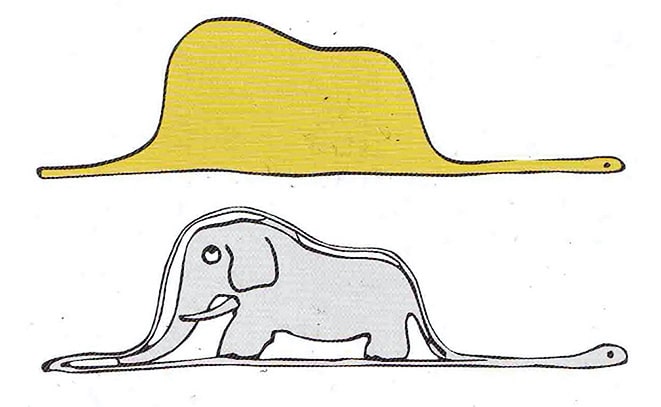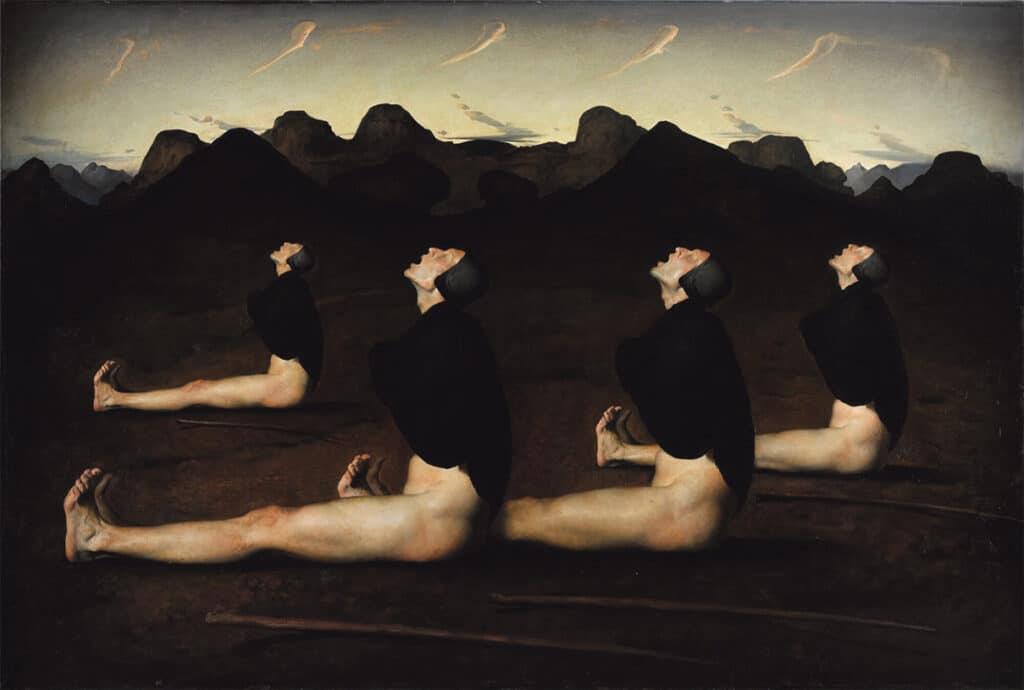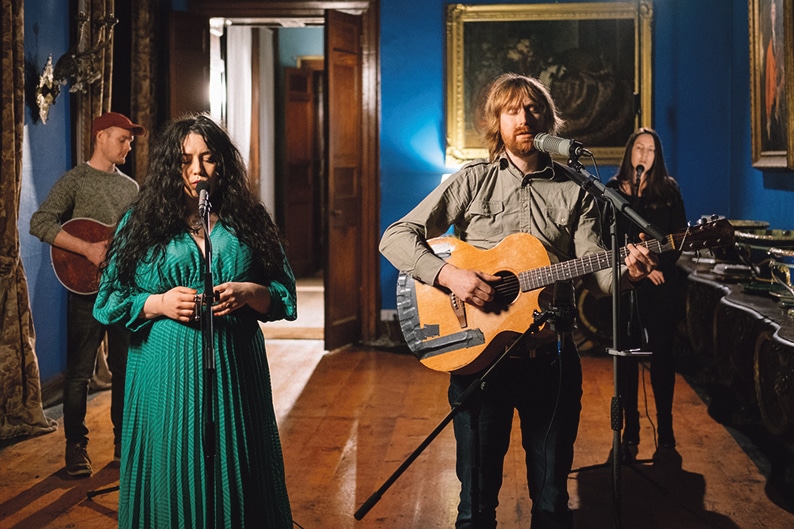James Waller is an Australian born artist and poet based in West Cork. Through this column James explores the world of art, introducing the reader to major works of art and artists and reflecting on what makes them so engaging.
At the beginning of the French classic, The Little Prince, by Antoinne du-Saint-Exupery, the prince discusses his drawing no.1 and his drawing no.2. He becomes exasperated by the grown ups who think his drawing no.1 is a hat. Of course, it is in fact an elephant being eaten by a boa constrictor, as his drawing no.2 demonstrates. Both drawings are the same shape, that is, they rhyme. Placing no.2 near no.1 one is struck by the rhythm the two snaky slopes create with each other.

When we speak of rhyme and rhythm it is usually in reference to poetry, however these things are integral to all art forms, painting included. In my last article I wrote about the spiral form as underpinning Matisse’s The Sorrows of the King. This time I’d like to discuss what I call a ‘lightning bolt’ composition, as demonstrated in a painting titled Dawn by the Norwegian painter Odd Nerdrum. In Dawn we shall see how The Little Prince’s drawing no.1 and drawing no.2 relate, that is, we shall see strong elements of rhyme and rhythm, and how these elements empower the painting. I’ll conclude the article with some ideas for drawing games and activities, and some suggestions for the more ambitious painterly readers.
Odd Nerdrum (b. 1944) is a contemporary figurative painter, who, as a student in the late 1960s rejected the trends of modernism and instead embraced the aesthetic of Rembrandt and the 17th century baroque. His work is astonishingly powerful, as much in delivery as in concept and composition. Dawn, painted in 1989, shows four identical figures, sitting in an Icelandic-inspired landscape, heads tilted to the sky as if in song. It is a strange, yet magnetizing image. It makes me think of how a choreographer might deploy dancers on a stage, and this is indeed a good way of approaching Nerdrum’s figurative arrangements.

Dawn is, as I mentioned earlier, a ‘lightning bolt’ composition. This means that there is a series of diagonals that zigzag vertically down through the picture plane, starting with the comma-like ‘clouds’ and ending with the ‘staffs’ at the bottom. The figures, being identical, but of different size echo and amplify each other; the curve of their backs rhyme, generating strong linear rhythm; their noses are echoed by the pinnacle shapes of the rocks; the shape of the second head from the left is echoed by the shape of the rock directly above it (here we might spy a similar relationship to the Little Prince’s drawing no.1 and 2). The dark cloaks are, equally, echoed by the mountains, whilst the mountains and the comma-like clouds echo the angle of the faces, from jaw to chin to nose.
The arrangement of the palette – that is, the colour selection – synchronises beautifully with Nerdrum’s program of rhyme and rhythm. The dark capes and caps are in synch with the silhouettes of the mountains; the skin-colouring is in synch with the creamy yellows and blues of the sky; the dark monochromatic browns of the landscape allow us to focus our attention on the relationship between the figures and the sky.
All of the above – both the linear and chromatic echoes – make the painting extremely powerful, causing the image to visually resound, as a song of colour and form, rising to the light dawn.
As a fun activity you might try creating a drawing game, whereby one person draws a shape, and everyone else comes up with as many drawings (of things) as they can that rhyme with that shape. For those more ambitious artists you might try experimenting with different compositions, where you deliberately introduce elements that rhyme with your main subject. Happy creating!
James offers a range of studio-based courses for children and adults in Classical painting, drawing and printmaking at Clonakilty School of Painting.See www.paintingschool.jameswaller.org for details


